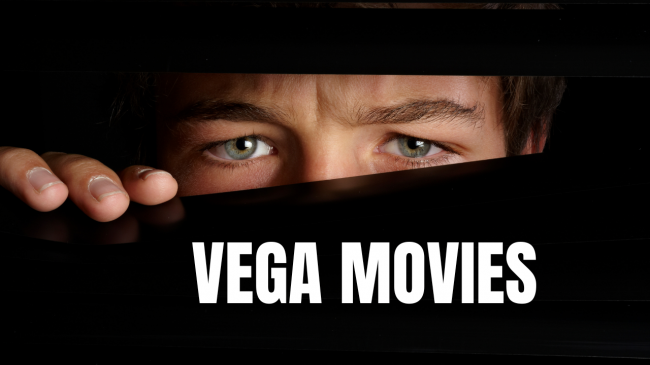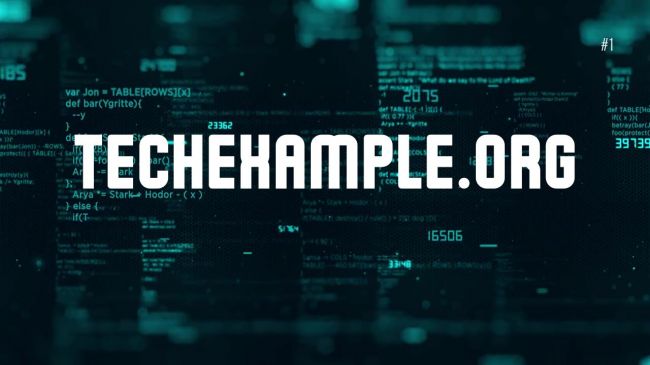On This Page
- Global Catalog Showdown
- Originals That Travel, And Why They Matter
- Pricing, Bundles, and the VPN Equation
- The Experience Layer: Devices, Subtitles, and Invisible Friction
- Decision Matrix: A Five-Step Shortcut
- Two Numbers That Explain the Market
- Looking Ahead: Mergers, Crackdowns, and the Cat-and-Mouse Game
- Final Word: Choose Your Passport, Not Your Prison
When you sit down to stream a show today, you are no longer just picking a title; you’re effectively negotiating where in the world you want to watch it. Hulu, Disney+, and Netflix dominate the global conversation, yet their libraries, pricing, and even subtitle quality shift from country to country. That leaves international fans with a puzzle: which service actually delivers the movies and series they crave, and is it worth firing up a VPN to fill the gaps?
This article breaks down the core decision-makers catalog depth, originals, pricing, platform compatibility, and the VPN workaround so you can choose the right service without wasting evenings on “title unavailable in your region” messages.

Global Catalog Showdown
Trying to explain the catalog differences between these three services is a bit like describing three suitcases that are constantly being packed and unpacked at different airports. Every platform has a headline number of titles, but the fine print is what matters: legacy studio contracts, regional censorship, and even local broadband rules decide what actually shows up on your screen. The sheer scale of Netflix makes it the easiest place to start, yet Disney’s ownership of mega-franchises and Hulu’s cable-style mix complicate the picture for anyone living outside the United States. It’s the same frustration behind the common question, “Can you get Hulu in France?” A reminder that where you live can matter just as much as what you want to watch.
Netflix’s massive footprint, Disney’s franchise dominance, and Hulu’s U.S.-centric catalog create a global maze for viewers. It’s the same user frustration reflected in many tech reviews, such as insights gathered in the analysis of AI tools in platforms like Dippy AI, where availability and access vary widely depending on region.
Netflix: The Roaming Giant
Netflix operates in more than 190 countries, and its library shapes-shifts in each one. Japanese viewers enjoy an enviable selection of anime movies that never appear in the United Kingdom, while Canadians can stream the Oscar-winning “Parasite,” but Britons cannot. What tends to be consistent are Netflix Originals “Wednesday,” “Squid Game,” “Money Heist” because Netflix owns worldwide rights from day one. The rule of thumb is simple: if a title carries the red “N,” you’ll almost certainly see it at midnight in Manila as fast as you do in Madrid.
Disney+: The Franchise Fortress
Disney+ entered the world stage later but brought a lockbox of intellectual property so valuable that “Star Wars” spinoffs and Marvel shows alone can justify a subscription. Where it gets tricky is catalog depth. The big hitters, Pixar, Marvel, and National Geographic, tend to be everywhere, yet deep cuts such as a 1990s Disney Channel movie or a forgotten 20th Century Fox thriller might be missing if another broadcaster still holds local rights. Latin American viewers saw “Encanto” appear within a month of its theatrical release, but parts of Southeast Asia waited nearly half a year for “Coco” because of pre-existing deals with terrestrial networks.
Hulu: The U.S. Island
Officially, Hulu is only available in the United States, with a spin-off version in Japan that shares the name but not the catalog. For international TV fans, Hulu is tempting precisely because it fills gaps left by the other two: next-day episodes of network shows, FX originals such as “The Bear,” edgy comedies like “Reservation Dogs,” and a boutique selection of indie films. For anyone wondering how to watch Hulu outside US, the options aren’t straightforward: non-U.S. users either wait for the shows to migrate to Disney+ (via the Star hub) or fire up a VPN, jump the payment hurdle with a U.S. card or gift code, and hope Hulu’s proxy detection doesn’t boot them mid-episode.
Many users follow guides similar to those found in honest tech reviews like the breakdown of realistic expectations in tools such as HIX.AI to weigh whether VPN workarounds are worth it.
Originals That Travel, And Why They Matter
Original programming is the rocket fuel that propels every new subscriber sign-up. It’s also the single biggest reason people decide whether to bother with VPNs, gift cards, or currency-based hacks.
Netflix Originals: Constant Noise, Global Ears
Netflix drops at least one new film or series every day. That relentlessness ensures that your social media feed is rarely quiet; something from a Korean reality contest to an Argentine political thriller will trend somewhere in the world at all times. International audiences value this “always on” strategy because it minimizes FOMO: you know the buzziest new series is only a click away, not locked behind a U.S. border wall.
Disney+ Originals: Fewer, Louder, Longer Tails
Disney+ relies less on volume and more on magnitude. When “The Mandalorian” or “Loki” drops, discussion dominates the internet for weeks, helped by Disney’s decision to revert to weekly releases. You may only get ten big originals a year, but each one lands like an event film. That said, if you’re indifferent to lightsabers and infinity stones, Disney’s current original slate may feel lean compared with Netflix’s global buffet.
Hulu Originals: Prestige in a Small Room
Hulu’s “smaller, smarter” approach pays off in critical acclaim. “The Handmaid’s Tale” became the first streaming show to win an Outstanding Drama Emmy. “Only Murders in the Building” makes true-crime satire binge-worthy, and “Pen15” earned cult status with its awkward nostalgia. International reach, however, is scattershot. Some series premiere day-and-date on Disney+ Star hubs abroad, others surface six months later, and a few never arrive at all. If you live outside the States and crave Hulu originals immediately, a VPN is almost mandatory.
Pricing, Bundles, and the VPN Equation
Sticker price is the easiest metric to compare until you remember that most viewers pay in wildly different currencies, sometimes even billing from a secondary market through a VPN. The question becomes: how much extra friction will you tolerate for savings or catalog access?
Netflix’s tiered model ranges from mobile-only plans in parts of Asia to 4K premium tiers in Europe. Disney+ keeps things simpler but nudges ARPU upward through ad-supported levels and regional partners like Hotstar in India. Hulu (Within Disney+), meanwhile, sits at
$10.99 with ads or $19.99 ad-free, but whether you can even sign up outside the U.S. depends on payment gymnastics.
A mid-tier VPN averages $5 a month on an annual plan. Add that to your streaming budget and ask: Is unlocking Hulu or a bigger Netflix library worth the hassle? For Marvel die-hards in Germany, probably not; for a New Zealand fan desperate for “The Bear,” absolutely.
Many international viewers make decisions based on digital behavior studies and industry data, just like people who follow global internet usage charts such as Statista’s gateway-to-news data.

The Experience Layer: Devices, Subtitles, and Invisible Friction
You can only stream what your hardware supports, and nothing breaks immersion faster than missing subtitles or a forced downgrade from 4K to 720p.
Netflix gates 4K/HDR behind its Premium tier but offers more than thirty interface languages and consistent 5.1 audio. Disney+ provides Dolby Vision and Atmos to nearly everyone, but sometimes ships legacy content with English-only captions. Hulu, still anchored in a domestic mindset, limits 4K playback to select originals and only on certain devices; an Apple TV or Xbox is fine, but many smart‐TV apps cap at 1080p. If you VPN into Hulu from abroad, remember that downloading the app itself can require sideloading an APK or switching your App Store region, minor headaches that add up.
Decision Matrix: A Five-Step Shortcut
Plenty of people spend more time comparing catalogs than watching shows. Spare yourself the paralysis with a method that takes five minutes:
- Write down every movie or series you must see in the next quarter.
- Check a neutral aggregator like JustWatch for each title’s regional availability.
- Calculate coverage: if one service satisfies 70-80 percent of the list, start there.
- For leftovers, decide whether you can wait for regional rights to lapse or whether you’re willing to pay for a VPN/payment workaround.
- Re-evaluate every three months; rights windows change faster than most viewers realize.
If you follow that flow, you’ll rarely find yourself doom-scrolling an empty watch-list at midnight.
Two Numbers That Explain the Market
Statistics rarely tell the whole story, but two figures reveal why these platforms fight so hard for global attention:
- Netflix experienced a strong finish to 2024, adding nearly 19 million new subscribers in Q4, pushing the total to about 301.6 million by the end of the year.
- Disney+ subscriber count dipped to approximately 125 million by Q4 2024, a modest decline from 150 million (Disney+ and Hulu subs combined rose to 183 million).
Those tens of millions outside North America and outside the original licensing footprint represent the fastest-growing slice of the pie, which explains why catalog negotiations, local originals, and even subtitle accuracy have become battlegrounds.
Looking Ahead: Mergers, Crackdowns, and the Cat-and-Mouse Game
Disney now owns 100% of Hulu after Disney finally closed its deal with Comcast to buy out NBCUniversal's one-third stake in the streamer in June 2025. The Hulu app will be phased out and "fully integrated" into Disney+; 'Fully Integrating' Into Disney+. Additionally, Hulu will replace Star as a tile on the international Disney+ service, with the transition starting in the fall of 2025. VPN enthusiasts could find their workaround simplified: one app, one bill, fewer geo-locks.
Netflix, for its part, is doubling down on original content and cracking down on password sharing, two strategies aimed at offsetting churn without raising prices too aggressively. VPN detection tech will improve, but so will obfuscation protocols; the tug-of-war is endless.
For viewers, the best play is to stay nimble. Subscriptions are monthly, VPNs are cancel-anytime, and competition is your ally. Keep an eye on quarterly library shifts, resist the urge to hoard dormant subscriptions, and you’ll stream more for less.
Final Word: Choose Your Passport, Not Your Prison
Streaming was supposed to demolish borders, yet the reality still involves plenty of digital customs checkpoints. The good news is that informed viewers now wield more tools than ever regional pricing, gift cards, smart DNS services, and VPNs to curate a personal global library. Decide what matters most: massive volume, must-see franchises, or prestige niche titles. Pick the platform (or combination) that hits those priorities, and accept that you can always change your mind next month. Happy watching, no matter what country your IP address claims to be in tonight.
Post Comment
Be the first to post comment!





